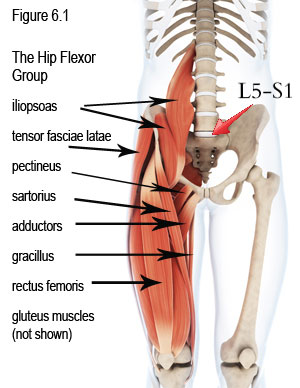How to Get Rid of Lower Back Pain
Let’s all be honest.
We are not that nice to our backs. We are constantly moving, sitting and walking around and don’t take the time to properly address problems when they arise.
Especially when it comes to lower back pain.
The last time you bent down to pick something up, you may have felt the muscles of your back strain. You may have also tried to convey to others that you were fine, even though you may not be feeling that great.
There are a number of ways to assist you with lower back pain, and we’ll review three steps in particular to find the relief you need.

Step 1: Understanding Back Pain on a New Level
Lower back pain, or lumbago, can occur for a number of reasons. 80% of the population will experience a back problem at some time in their lives which makes it even more important for you to take care of.
Extended periods of sitting, extensive time participating in sports and even certain jobs like construction work can cause the pain to become worse.
Lower back pain can be sharp or dull, constant or intermittently, and can range from mild to severe.
One thing you also want to keep in mind is that our “hip flexor” muscle, or the iliopsoas, is made up of two muscles, the iliac and the psoas major. It is the muscle that extends from our
Under constant tightness and strain from everyday activities, your iliopsoas can become compressed.
When the muscle becomes overly compressed, the pain will travel up towards the area where the muscles sit at your lower back.

Additional weight in your abdomen can also be a culprit of constant lower back pain. Any additional weight to your midsection can cause your spine and your muscles to pull against those in your lower back.
For many, it is a difficult thing to avoid not sitting all day if you have a desk job, especially because you’re in the office for a minimum of eight hours a day.
For those who are athletes, it is also difficult to not strain the muscle due the constant activity they experience.
Living with any form of lower back pain is something that can be treated, and it is recommended to possibly create an exercise routine that works for you.
When there is an imbalance-directly related to your lumbar spine-or the flexor muscles are being strained by sedentary activity, your lower back can be easily susceptible to strain or injury.
Now that you have a better understanding of identifying what causes you pain in the first place, you’ll be able to assess the situation head on.
2. Adding “The Right” Yoga to Your Routine
We are constantly putting our backs through a lot of stress and tension. Simple yoga poses can provide you with relief, and also can strengthen the core muscles.
Strengthening and stretching those muscles is vital to reduce your pain and the next step to take.
Yoga is a gentle and versatile form of exercise that can stretch your muscles in a new way to help with your lower back pain.
Many studies have also shown how stretching helps to relieve back soreness, and can also strengthen key muscles you use.
If you are in extreme pain, yoga may not be the best choice as it could cause further discomfort, but you can ask a doctor or chiropractor for more information in regards to getting treatment for the pain.
If the pain is less severe, yoga will also create support from the the supportive muscles and tissues that nurture your back-like your abdomen and your glute muscles- and will be at their optimum level of function after you work them out enough.
There are a number of yoga poses out there, but keep in mind that these below are typically the best to target the muscles connection to your lower back.
Ultimately, a yoga routine may not be the best method of pain relief for everyone. Some people may have have a better experience with physical therapy instead.

Simply doing poses may not be the only thing that you’ll want to pay strict attention to.
Breathing properly and reminding yourself to not hold your breath is key to reduce the chances of overstretching or injuring yourself further.
There are additional poses as well that could potentially be used for lower back pain relief, like the Two-Knee Twist that doesn’t overexert your already irritated back muscle.
With easy stretches like these, you’re sure to feel results soon, but you want to ensure you continue to stretch for more than just one day to really start feeling the results.
3. Finding Long-Term Treatment Options & Further Back Pain Care
The last thing you want is to finally alleviate your pain only to find that it seems to be cropping back up. Yoga or another form of exercise is highly recommended by many of those in the medical industry, though again this might not be something that works well for you.

Many times, if you go to a doctor they may advise you to seek out physical therapy for your back. Those sessions can range in length of time, simply because each person’s needs are different.
If yoga does infact become your choice, you can always follow-up every stretching session with heating a cooling methods to treat newly stretched muscles. Providing heat loosens muscles, while cold also thwarts your nerves' ability to conduct pain signals.
Understanding, treating and being conscious of future treatment for lower back pain relief is vital, but simple to start working towards. The best place to start is to understand why the pain began in the first place, whether that be from an overabundance of movement or from a more sedentary lifestyle.
Lower back pain isn’t something you want to ignore, and these are just a few steps to take care of the issue.
